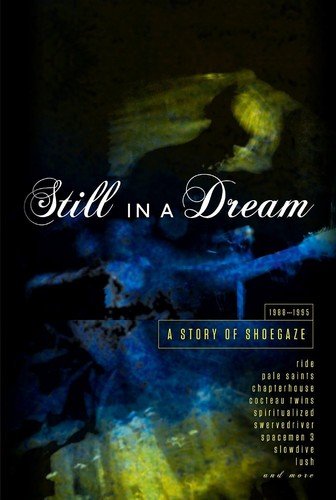
Various Artists
Still in a Dream: A Story of Shoegaze
Release Date: Jan 29, 2016
Genre(s): Pop/Rock, Alternative/Indie Rock, Indie Pop, Dream Pop, Noise Pop, Noise-Rock, Shoegaze
Record label: Cherry Red
Music Critic Score
How the Music Critic Score works
Buy Still in a Dream: A Story of Shoegaze from Amazon
Album Review: Still in a Dream: A Story of Shoegaze by Various Artists
Excellent, Based on 8 Critics
Based on rating 10.0/10
For a good portion of American kids in the late ‘80s/early ‘90s, the magnetic draw towards loud guitars didn’t come from thrash metal, hardcore or “grunge,” but rather the sound of the British shoegaze movement and its enigmatic swirl of sweetness, psychedelia and searing walls of amp fuzz. However, this generous 87-track box set that chronicles the roots and rise of shoegaze not only features the cream of the scene in the U.K., but the most talented acolytes from the USA as well. And it’s deep, too.
Based on rating 9/10
Shoegaze. Initially a derogatory term bestowed upon bands that emerged in the early Nineties deemed to be hiding behind floppy fringes whilst staring at their feet. Of course that wasn't the case, as My Bloody Valentine's Debbie Googe pointed out in an interview on this very site three years ago. 'We were staring at our pedals not at our shoes!' she insisted.
Based on rating 4/5
The term “shoegazing” was first coined with piss-taking jollity in the weekly music papers, referring to the music’s practitioners sounding as if they were too lost in music to stare anywhere but the effects pedals at their feet. After its peak between 1990 and ’92, the style became embedded though largely unacknowledged in UK music history but, as this lavish monument shows, was peppered with idiosyncratic and gloriously strange delights. Five discs littered with rarities and tracks making their CD debut are presented in a hardback book stuffed with memorabilia, band biographies and Neil Taylor’s dissertation-length notes.
Based on rating 8/10
Let's get this out of the way at the beginning. Telling the story of the overdriven, dreamlike sound of shoegaze without including a song by My Bloody Valentine is like The Great Gatsby without Gatsby or Citizen Kane without Charles Foster Kane. The group pretty much invented the sound, went on to perfect it, and was always the one band that could be counted on to innovate and disrupt.
Based on rating 8.0/10
Like band names, genre terms usually lose their literal meaning once they get established. Just as the corny reference of "My Bloody Valentine" was wiped away by the band’s might and majesty, "shoegaze" became a phonetically evocative word—those oozy vowels and soft sibilants—that suited the blurry sound. The literal meaning—and the fact that it was initially intended as a derisive term— disappeared.
Based on rating 6/10
If you think about “shoegaze” music in the 21st century, it is most likely because the genre is enjoying something it had for maybe 36 hours or so during its initial peak in the early 1990s. That is, buzz. This buzz is mainly due to the handful of original prime movers that have reformed and/or released new material over the last decade or so.Swervedriver and Chapterhouse were first out of the gate, followed by Slowdive, Ride and, most recently, Lush.
Opinion: Fantastic
Those who joyfully declare “It sounds like My Bloody Valentine!” whenever they hear a new band deploying a bit of pitch bending will find much to love with this lavishly produced - if rather intimidating in length - 87 track box set encased in very ‘Vaughan Oliver circa 1987’ 4AD packaging. The key acts, apart from MBV themeselves, are all on the tracklisting: Jesus & Mary Chain, Slowdive, Galaxie 500, Ride, Loop, Lush, Curve, Swervedriver, Cocteau Twins, House of Love and Spacemen 3 are each present. Long term shoegaze fans won't find much merit here; the inclusion of those acts certainly makes sense, but way more interesting are the bands who operated under the radar, who either came before or after the imperial phase of gaze, or bands you may not have necessarily connected to the genre.
Opinion: Excellent
The Upshot: Plenty to like in—per the title—what’s spread across five CDs and 83, going back to the beginning of shoegaze (Jesus & Mary Chain, Cocteau Twins, House of Love, Ultra Vivid Scene), and winding up with its flowering in the U.S. and elsewhere. My Bloody Valentine fans, however, may feel dissed. The late 1980s to early 1990s were full of bands that bent glistening, feedback altered layers of guitars over hazy, half-buried vocals, that elevated chilled, half-dreamed purity over the sharp hooks of pop or the hot syncopation of funk.
'Still in a Dream: A Story of Shoegaze'
is available now

